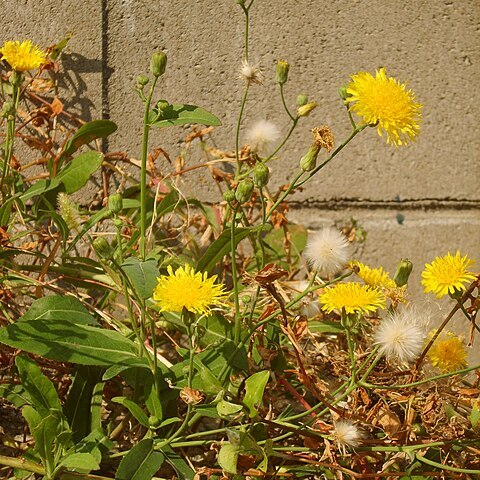A herb. It keeps growing from year to year. It grows 30-60 cm high. It has underground stems or rhizomes. These are 3-5 cm long. The bud at the end produces a ring of leaves and an erect stem. The leaves are light green and often have purple spots. The leaves at the base are sword shaped and 10-20 cm long by 2-6 cm wide. They have spines or teeth along the edge. The leaves on the stems are ear shaped. The flowers are yellow.

